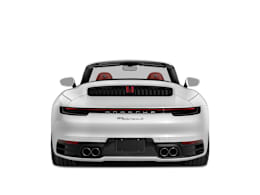Introduction
2020 Porsche 911 Gains Power and Mystique
Redesigned sports car adds muscle in the styling department and engine compartmentOverview
The redesigned 911 sports car is highlighted by more powerful and efficient engines as well as a new interior layout. And let’s get this out of the way: Porsche purists will rejoice that the new 911 will still offer a manual transmission; an eight-speed, dual-clutch automatic transmission is standard.
The 911’s unmistakable silhouette and rear-engine layout also remain. This sports car has rocked our tests for years, with a stirring exhaust note, sublime handling, and a relatively supple ride. We look forward to seeing if Porsche can maintain that level of performance excellence.
Here’s what we know so far about the new model.
The 911 still looks very much like a 911—a good thing for buyers resistant to change. The new Carrera’s body is now made of aluminum, and it has wider wheel housings that hold 20-inch front wheels and 21-inch in the rear. Also, the car gets wider at the front and the rear fenders, giving even the base 911 the muscular broad-shoulder look of the outgoing 911 Carrera 4 and 911 GTS models. Taking a page out of the Tesla handbook, the 911’s electronic door handles are now flush with the doors, though there is a lip to grab at the bottom. Other exterior features include standard LED headlights, and a variable-position rear spoiler.























